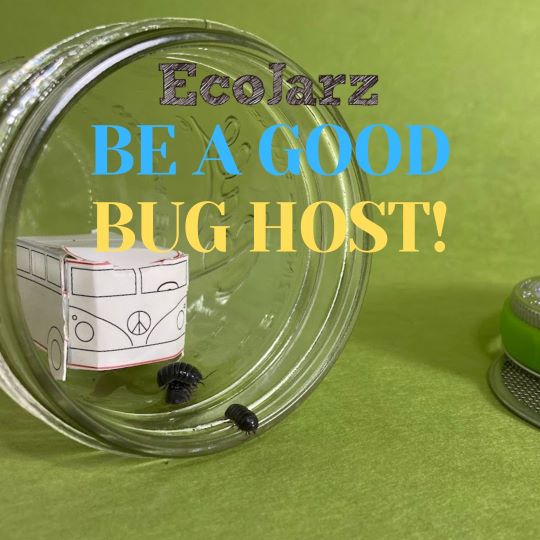
Be a Good Bug Host
Share
Recently EcoJarz released a new product, The DIY Bug Hotel, which allows you to create a home in a mason jar for bug guests! Observing bugs is a fun activity, but here are some things you should keep in mind when taking care of those little critters.
Pillbugs!
 Pillbugs, or roly-polies, are one of the easiest low maintenance bugs to have under your care. Though, calling them a bug would be a disservice to them as they actually are crustaceans! Pill bugs thrive in moist environments and don’t require water as long as their food and environment is moist. Due to this, we suggest feeding your pet pillbug leaves and other water rich organic material. Pillbugs are great to keep under your care and observe.
Pillbugs, or roly-polies, are one of the easiest low maintenance bugs to have under your care. Though, calling them a bug would be a disservice to them as they actually are crustaceans! Pill bugs thrive in moist environments and don’t require water as long as their food and environment is moist. Due to this, we suggest feeding your pet pillbug leaves and other water rich organic material. Pillbugs are great to keep under your care and observe.
Additionally, pillbugs are great organisms to have in your garden. They are essential for decomposition of organic material, providing nutrients to soil and creating a more healthy ecosystem within your garden.
Ladybugs!
 Ladybugs are great bugs to observe and learn from. There are nearly 500 species of ladybugs in the US! These bugs are commonly predators, meaning they eat other smaller bugs. They can be very helpful in maintaining a healthy amount of bugs in your garden. Some ladybugs are herbivores and enjoy eating leaves, fruits, pollen, fungi, and nectar.
Ladybugs are great bugs to observe and learn from. There are nearly 500 species of ladybugs in the US! These bugs are commonly predators, meaning they eat other smaller bugs. They can be very helpful in maintaining a healthy amount of bugs in your garden. Some ladybugs are herbivores and enjoy eating leaves, fruits, pollen, fungi, and nectar.
Keeping ladybugs alive in captivity is a bit difficult, so we recommend only observing a ladybug for a few hours and releasing them back into the wild. If you want to attract Ladybugs to your yard grow nettle. Ladybugs like to lay their eggs on the undersides of nettle leaves.
Lightning Bugs!

Lightning bugs, or fireflies, are fascinating insects with the ability to light up the night. Like ladybugs, these bugs require a little more effort to take care of. For that reason, we recommend only holding one in captivity for at most a day, so it can then be released and help produce more lightning bugs. A helpful tip for keeping the firefly healthy is adding a wet paper towel or an apple to the jar to maintain a moist environment for the insect.
A lightning bug’s eating habits vary depending on their stage of life. A younger larva eats things like slugs, organic material, dead animals, and other Larvae. After they grow and become an adult, they eat very little. Only eating nectar, pollen, and other bugs.
While these are only three bugs, there are thousands of other insects out there in the world. If there are any bugs you are interested in observing we suggest you do some research on them. Remember, not all bugs are the same, so be careful and treat them with kindness and respect. Have fun!
Sources:
https://www.atshq.org/what-do-pill-bugs-eat/
https://www.atshq.org/what-do-ladybugs-eat/
https://www.almanac.com/attracting-ladybugs-garden-beneficial
https://www.atshq.org/what-do-lightning-bugs-eat/
https://www.massaudubon.org/learn/nature-wildlife/insects-arachnids/fireflies